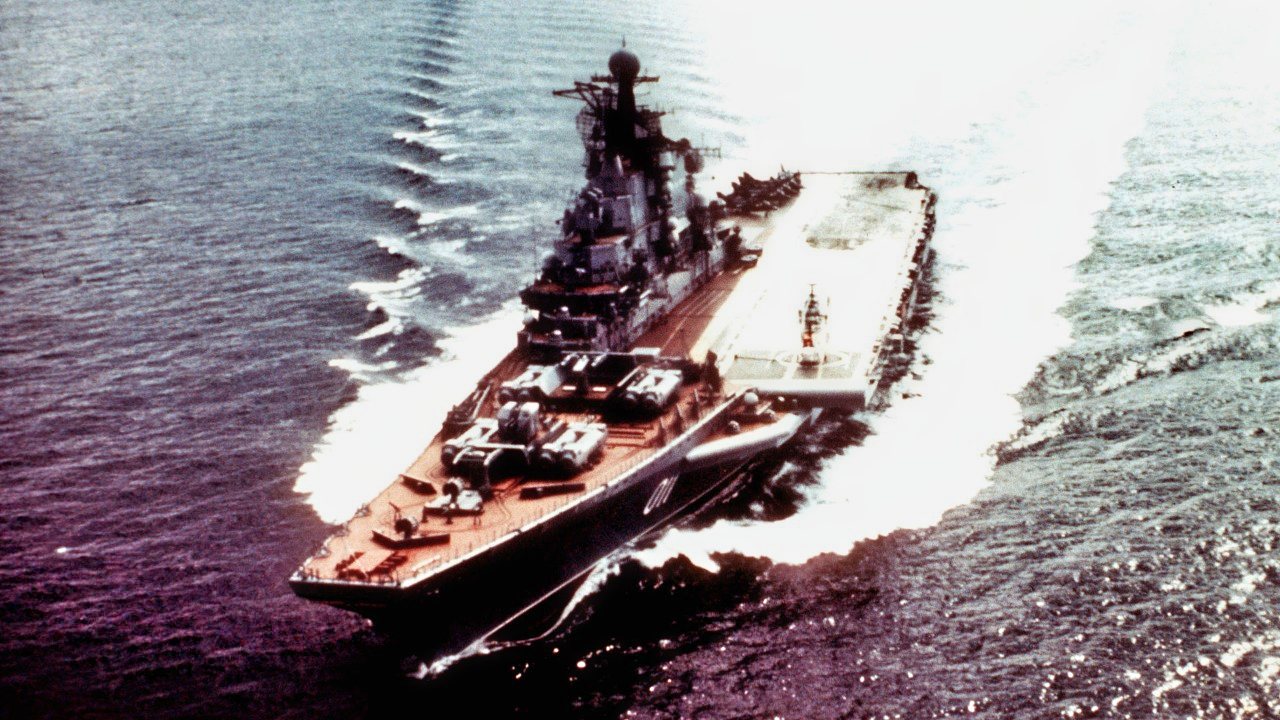Russia's Kiev-class Aircraft Carrier was a Disaster
The Kiev-class carriers were smaller than traditional carriers, with a displacement of around 45,000 tons. They were equipped with a ski-jump ramp for launching fixed-wing aircraft and had a complement of around 40 aircraft, including helicopters and vertical takeoff and landing aircraft like the Yak-38.
Summary: Throughout the Cold War and beyond, the Soviet Union and Russia have grappled with the concept and execution of aircraft carrier operations, an area where they've never matched the prowess or commitment of the United States. Despite recognizing the strategic and prestige value of carriers, the Soviets faced numerous obstacles in developing their own carrier force, including economic constraints and technological challenges. This led to the creation of the Kiev-class carriers in the late 1970s, smaller vessels with limited capabilities compared to their American counterparts. Although these efforts represented a significant investment in naval aviation, they fell short of achieving a competitive edge, culminating in the decommissioning of such ships and Russia's continued struggle with carrier operations today.
From Kiev to Kuznetsov: Tracing Russia's Aircraft Carrier Journey
Neither Russia nor its Soviet predecessor ever took aircraft carrier operations seriously. The Soviet Navy always focused on the heavy cruiser and the submarine – aircraft carriers were America’s purview. These systems were expensive and unwieldy. While the Americans proved they could easily handle the platforms, the Soviets had neither the resources nor the inclination to match the U.S. in this area.
Yet the urge to deploy something comparable to the all-powerful U.S. carrier was always there. The Soviet Navy made multiple attempts to build its own version of smaller helicopter carriers. Some of these even made it off the drawing board. But in typical Soviet fashion, the Reds couldn’t afford the complexities in the systems they sought to build, so they cut corners in the design process.
The Soviet Navy Wanted Carriers But Couldn’t Afford Them
There were a number of failures and false starts. But the Soviet Navy persisted, and eventually, along came the Kiev-class aircraft carrier.
The Kiev and the Minsk were commissioned first, both of them in the late 1970s. These carriers were designed to provide air support for Soviet naval operations and were intended to operate in the Arctic and the North Atlantic.
The Kiev-class carriers were smaller than traditional carriers, with a displacement of around 45,000 tons. They were equipped with a ski-jump ramp for launching fixed-wing aircraft and had a complement of around 40 aircraft, including helicopters and vertical takeoff and landing aircraft like the Yak-38.
The carriers were equipped with a variety of anti-ship and anti-aircraft weapons, as well as electronic warfare systems to defend against enemy attacks. They were also capable of carrying out strike missions using their aircraft.
Naval Persistence
The Kiev-class carriers saw limited service. The Minsk was decommissioned in the late 1990s, and the Kiev was converted into a museum ship in China. They were not as successful or as advanced as other aircraft carriers in service during the same time period, such as those operated by the U.S. Navy.
The Kiev-class aircraft carriers were another failed Soviet attempt to compete with the Americans in the carrier domain. Despite this, the Soviets persisted in multiple attempts to construct their own carriers. Today, Russia continues to maintain a single, shoddy carrier. They do not want to lose the capability outright, no matter how weak their carrier operations may be.

And the Russians are unlikely to ever stop investing in carrier capabilities, even if their force is paltry and haphazard compared to the U.S. In some cases, this is because the Russians want to use carriers for different missions than the Americans. However, the persistence is also born out of a desire for greater prestige – never mind that carriers are increasingly obsolete, thanks to advances in anti-access/area denial weapons.
About the Author
Brandon J. Weichert, a National Interest national security analyst, is a former Congressional staffer and geopolitical analyst who is a contributor at The Washington Times, as well as at American Greatness and the Asia Times. He is the author of Winning Space: How America Remains a Superpower (Republic Book Publishers), Biohacked: China’s Race to Control Life, and The Shadow War: Iran’s Quest for Supremacy. Weichert can be followed via Twitter @WeTheBrandon.


